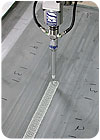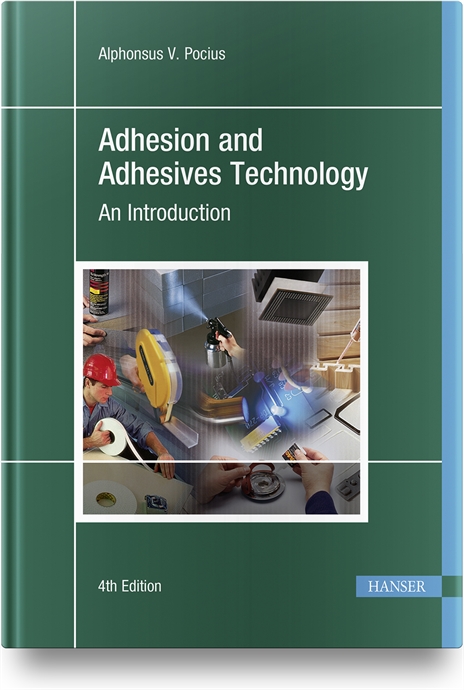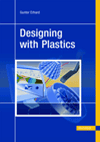ASSEMBLY magazine is celebrating its 50th anniversary this year. To mark the occasion, we are publishing a series of articles examining the past, present and future of various assembly technologies.


In contrast, our January 2007 issue contains 19 ads for adhesives and dispensing equipment. Ads for fas-teners and fastening machines are outnumbered by ads for all other assembly technology by a ratio of 6-to-1.
To be sure, advertising in ASSEMBLY is hardly a reliable barometer of manufacturing preferences. Nev-ertheless, there’s little doubt that the role of adhesives in product assembly has increased significantly in the past 50 years.
Outside of furniture assembly and carton sealing, adhesives did not get much attention from manufac-turers until the late 1950s and early 1960s. There were several reasons for this. First, adhesives were not easy to use. Most were solvent-based, water-based or two-part materials with long curing times. Often, curing had to be accelerated with heat.
Complicating the issue was a lack of equipment to quickly and accurately dispense adhesives. “Back then, people dipped and dabbed with brushes and sticks, or they used squeeze bottles or a pot and roller,” says Lyle Shoup, fluid solutions manager for Ingersoll-Rand Co. (Annandale, NJ). “There was a lot of waste.”
Another problem was perception. Mechanical fasteners, weldments and press-fits were seen as stronger and more reliable than adhesives, says Harry Arnon, president of Hernon Manufacturing Inc. (Sanford, FL), a supplier of adhesives and dispensing equipment. “Universities did not teach engineering students about adhesion and bonding,” he says.

Suppliers See the Light
Fifty years ago, the primary adhesive chemistries were epoxies, phenolics, polyvinyl acetates, contact adhesives, rubber cements and animal glues. Today, there are a wealth of chemistries to choose from, including acrylics, anaerobics, cyanoacrylates, epoxies, methacrylates, silicones and urethanes.The need to reduce curing time led to the development in the 1980s of adhesives that cure rapidly when exposed to ultraviolet (UV) and visible light. Today, acrylics, cyanoacrylates, silicones and epoxies are all available in UV-curing formulations.
Consumer electronics-especially miniature, portable devices-also stimulated the usage and develop-ment of adhesives. The small size of portable electronics often mandated assembly with adhesives rather than mechanical fasteners or snap-fits. The need to protect circuits from the elements spurred the devel-opment of sealants, coatings and potting compounds. Electrically conductive adhesives were developed to make devices smaller and lighter, while thermally conductive materials were formulated to dissipate heat from high-power microprocessors.
Cyanoacrylate was invented during World War II by researchers at Eastman Kodak who were looking for ways to assemble plastic lenses for gun sights. Cyanoacrylate was introduced for industrial and con-sumer use in 1955, but assemblers didn’t really start taking advantage of the material until the 1970s. Today, this high-strength adhesive is available in many formulations, including light-curing, rubber-toughened, gap-filling and low-outgassing versions.
Silicones are another adhesive that has enjoyed rising popularity in the past few decades. One- and two-part silicones are available in moisture-curing, heat-curing, UV-curing and hot-melt formulations.
“The use of silicones has expanded because the material offers great thermal stability,” says Stephen Bruner, marketing director for Nusil Technology LLC (Carpinteria, CA), a supplier of silicone adhe-sives. “It’s also changeable. You can make silicones that are optically clear, fuel-resistant or biocom-patible. You can add fillers to make them electrically or thermally conductive.”
Tapes and pressure-sensitive adhesives (PSAs) have also evolved considerably in the past 50 years. For example, Adhesives Research Inc. (Glen Rock, PA) got its start in the 1940s, making tapes to bundle wire harnesses for military airplanes. Today, the company makes high-tech PSAs for such diverse appli-cations as air fresheners, flat-panel displays, defibrillator electrodes and medicated transdermal patches.
According to George Cramer, vice president of marketing and commercial development at Adhesives Research, the biggest breakthroughs in tapes and PSAs were release liners and acrylic adhesives. Re-lease liners enabled adhesive suppliers to make double-sided tapes and transfer films. They also allowed suppliers to die-cut PSAs to suit specific applications. Acrylic adhesives gave suppliers more flexibility to formulate PSAs for specific needs.
“Back then, pressure-sensitive adhesives were mostly synthetic rubbers,” says Cramer. “Today, they’re mostly acrylics. You can do a lot with acrylics now that you couldn’t do back then. Acrylics have a wider range of properties than synthetic rubbers. They’re tackier.”

Dispensing Goes Automatic
Automatic dispensing technology was developed to meet requirements for speed and accuracy. “With automatic dispensing equipment, you could get more uniform application and use less adhesive. You could also get an enclosed system. You wouldn’t have open pots of adhesive with solvents flashing off into the air,” says Shoup.Early dispensing equipment consisted of manually operated valves. Material was fed to the valve with pneumatic or mechanical pressure, but the operator still controlled how much material was actually dis-pensed. Today, dispensing technology runs the gamut from handheld, semiautomatic benchtop units to fully automatic systems mounted on six-axis robots. With the ability to monitor and adjust themselves, some automatic dispensers require virtually no human oversight at all.
Miniaturization has been another driver of dispensing technology. “Fifty years ago, we marveled at how a massive, clunky box allowed us to see TV shows in color,” says Terrence Woldorf, director of market-ing at EFD Inc. (East Providence, RI), a supplier of dispensing equipment. “Today, we can store giga-bytes of information on something smaller than a matchbook. The ability to make small, precise, repeat-able deposits of adhesive has helped make that happen.
“In the ’70s, a dispense tip with an orifice 0.03 inch wide was acceptable, and all you had to provide was a handheld device that could push fluid through that orifice and keep the workstation relatively clean. Today, we’re putting fluid through an orifice 0.003 inch wide, and we’re doing it at very high speed.”
Indeed, the state of the art might well be the DJ-9000 automatic dispensing machine from Asymtek (Carlsbad, CA). It can jet adhesive onto a circuit board at a rate of 200 dots per second. The dots can be as small as 0.2 millimeter in diameter, while the shot size can be as small as 1 nanoliter. Even an “ordi-nary” syringe-based, time-pressure dispenser can be adjusted in increments of 0.0001 second for very precise control over shot size.
Globalization has influenced dispensing technology, too. “Manufacturers want dispensing equipment that is highly reliable, yet easy to use,” says Woldorf. “They want equipment that can go from an R&D lab at corporate headquarters, to a manufacturing facility anywhere in the world without affecting the process. We’ve had to adapt our equipment for a variety of voltages, languages and levels of workman-ship.”
The adhesives themselves also shaped dispensers. For example, cyanoacrylates forced suppliers to adapt their equipment to the low viscosity and quick curing time of the material. Suppliers also had to modify their equipment to handle UV-curing adhesives. This involved more than simply ensuring that dispensing components were opaque to light. “We learned that some UV-cure adhesives were shear-sensitive,” ex-plains Shoup. “Certain kinds of pumps imposed a shearing action on the material. The shearing action cre-ated heat, which caused the adhesive to cure prematurely. We seized a lot of pumps that way.”

What's Next
If bonding has reached an even footing with fastening and welding during the past two decades, experts fore-see an even bigger role for adhesives in the future.“Adhesives will help manufacturers make parts that are smaller, lighter, stronger and longer lasting,” predicts Arnon. “They give you flexibility in design and materials. Many of today’s composites and en-gineering plastics cannot be bolted or riveted. You need adhesives.”
Tapes will get stronger. Suppliers will develop tapes with additional adhesion mechanisms. “These ma-terials will behave like tapes initially, but they can be activated or enhanced through some sort of exter-nal energy, such as heat or ultraviolet light, to achieve near structural properties,” says Cramer. “That could open up applications for PSAs that are currently held by structural adhesives, reactive urethanes and mechanical fasteners.”
As for dispensing, assemblers will continue to pursue automation-not just to save manpower and re-duce waste, but because the requirements for speed, accuracy and small deposit sizes will overmatch the capabilities of people. “We’ll see a lot more robots applying adhesives,” predicts Shoup.



